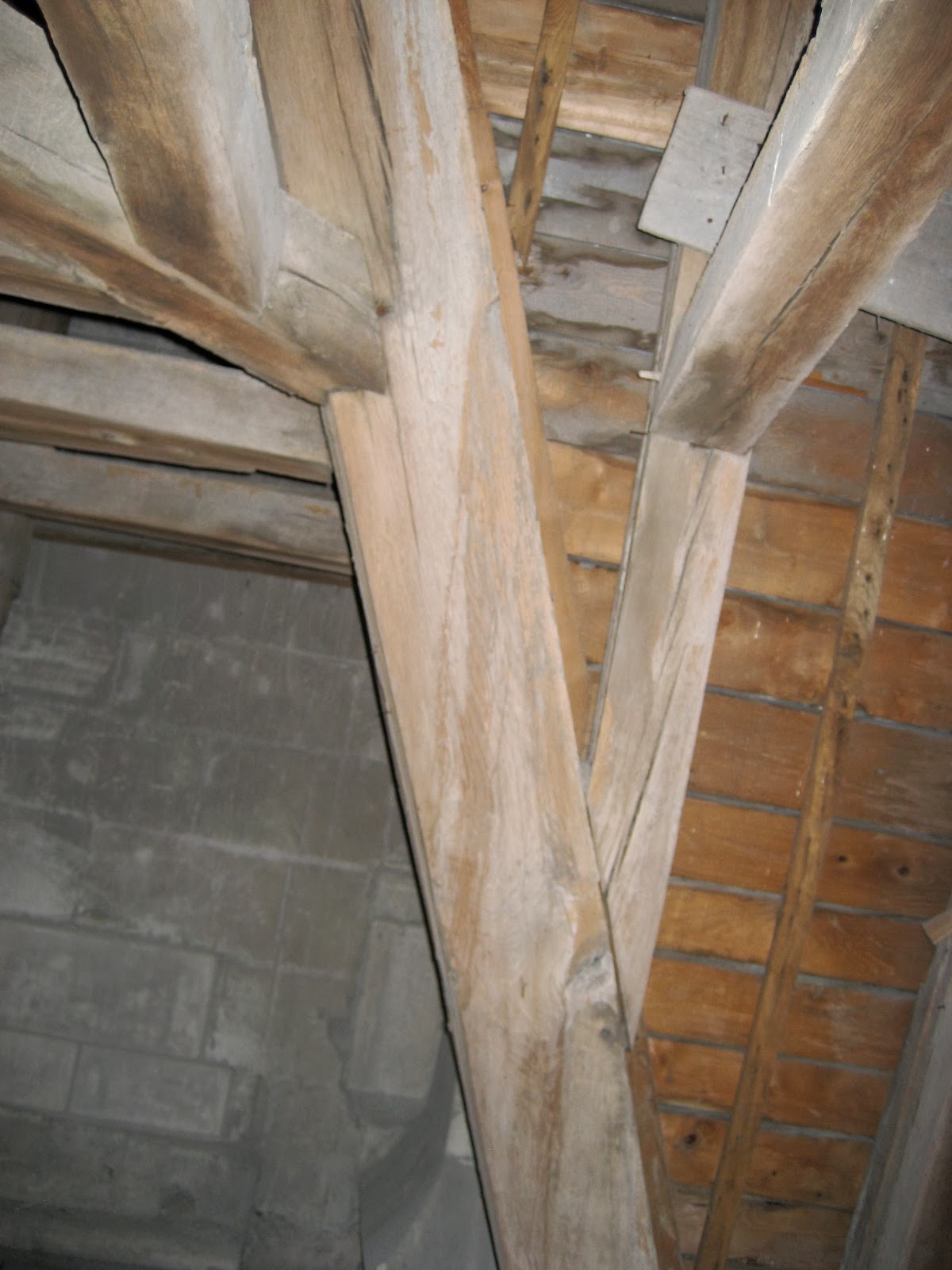Update: 2-28-14
This blog article is still valid, but see
Tréteaux Roof Framing Kernel and Claw Lines and the
Tréteaux Angles Check for more information on Hip Rafters rotated into the roof surface.
_____________________________________________________________________________
Will Beemer, at the Heartwood Timber Framing school in Washington Massachusetts was going to post this at JLC in the Devers De Pas thread, but couldn't login to the JLC forum.
http://www.heartwoodschool.com/
Anyway,
the reason that traditional European carpenters rotated the hip rafter was so that
they didn't have to cut a backing angle, I assume. Doing this without power
tools would be a burden. In modern work I think they mostly use plumb sided
members, like us. But they still need to know the old way since so much of
their work is restoration.
This peaked my interest in the rotated hip rafters, especially the rotated hip rafter with jack rafters that have a 90° miter angle. This is kinda like an oxymoron You have to know how to draw out the hip rafter backing triangle in plan view to rotated the hip rafter material, so you don't have to cut the backing angle on the hip rafters. It definitely wouldn't work in stick framing with 2x hip rafter material, but it would work in Timber Framing with a square hip rafter, like a 12x12 hip rafter.
3D perspective of the hip rafter rotated at the hip rafter backing angle.
With the hip rafter rotated at the hip rafter backing angle the miter angle on the side of the jack rafter is 90°, while the jack rafter back bevel angle, 39.76°, is the same for hip rafters that are plumb.
On the other side of the jack rafter the back bevel angle is the same, but what's interesting here is the claw angle. The claw angle is the same as the roof slope angle. In these drawings the profile roof slope pitch is an 8:12 pitch or an 33.69007° slope angle.
Here I've the hip rafter material, 10x10, rotated at the hip rafter backing angle. Then using the 1.3121 dimension as the hip rafter profile depth I can develop the footprint of the hip rafter in plan view.
Drawings showing the geometric development of the jack rafter miter angle, back bevel angle and the claw angle for the left side of the drawing.
Fairly easy development for the jack rafter miter angle and claw angle using the jack rafter profile development and the DP lines that defines the Upper Claw Angle.
Pictures that Billy sent me showing the hip rafter rotated.
Here's a jack rafter with a 90° miter angle for the head cut at the hip rafter. This is from my study on the
Tréteaux Dit Cadet task model. Where the sawhorse/hip rafter is rotated into the roof surface plane.
Hip rafter rotated in roof surface plane.
Hip rafter backing angle that defines the footprint of the hip rafter to place one edge of the hip rafter into the roof surface plane.














































